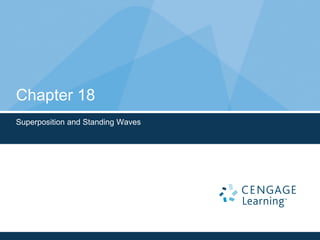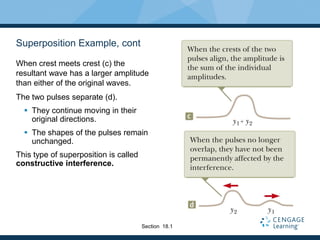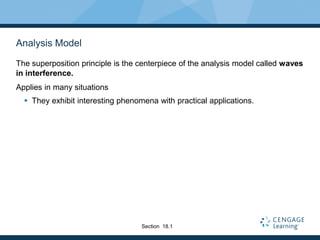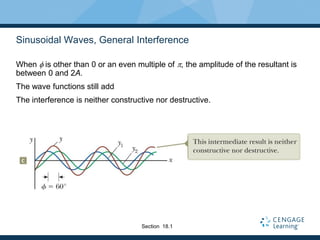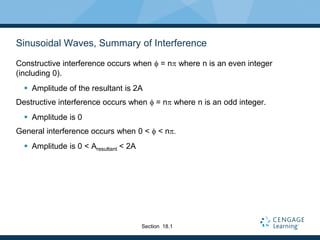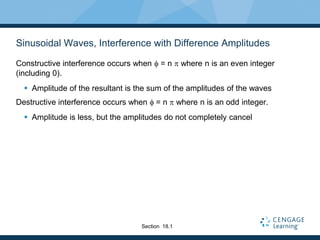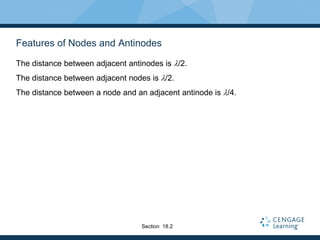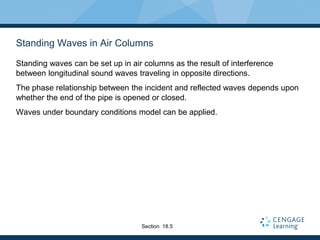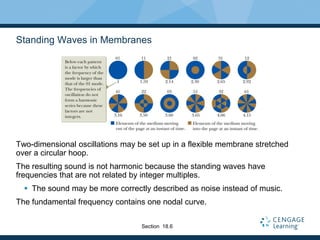1) Waves can form standing wave patterns when two waves of the same frequency travel in opposite directions. Standing waves have stationary wave patterns but the individual elements still vibrate.
2) Standing waves occur in strings, air columns, and rods when the system is driven at one of its natural resonant frequencies. The resonant frequencies are determined by the boundary conditions and form harmonic series.
3) Musical instruments use standing waves to produce sound, with the resonant frequencies determining the pitch. Strings and air columns have different natural frequencies based on their fixed boundaries.
